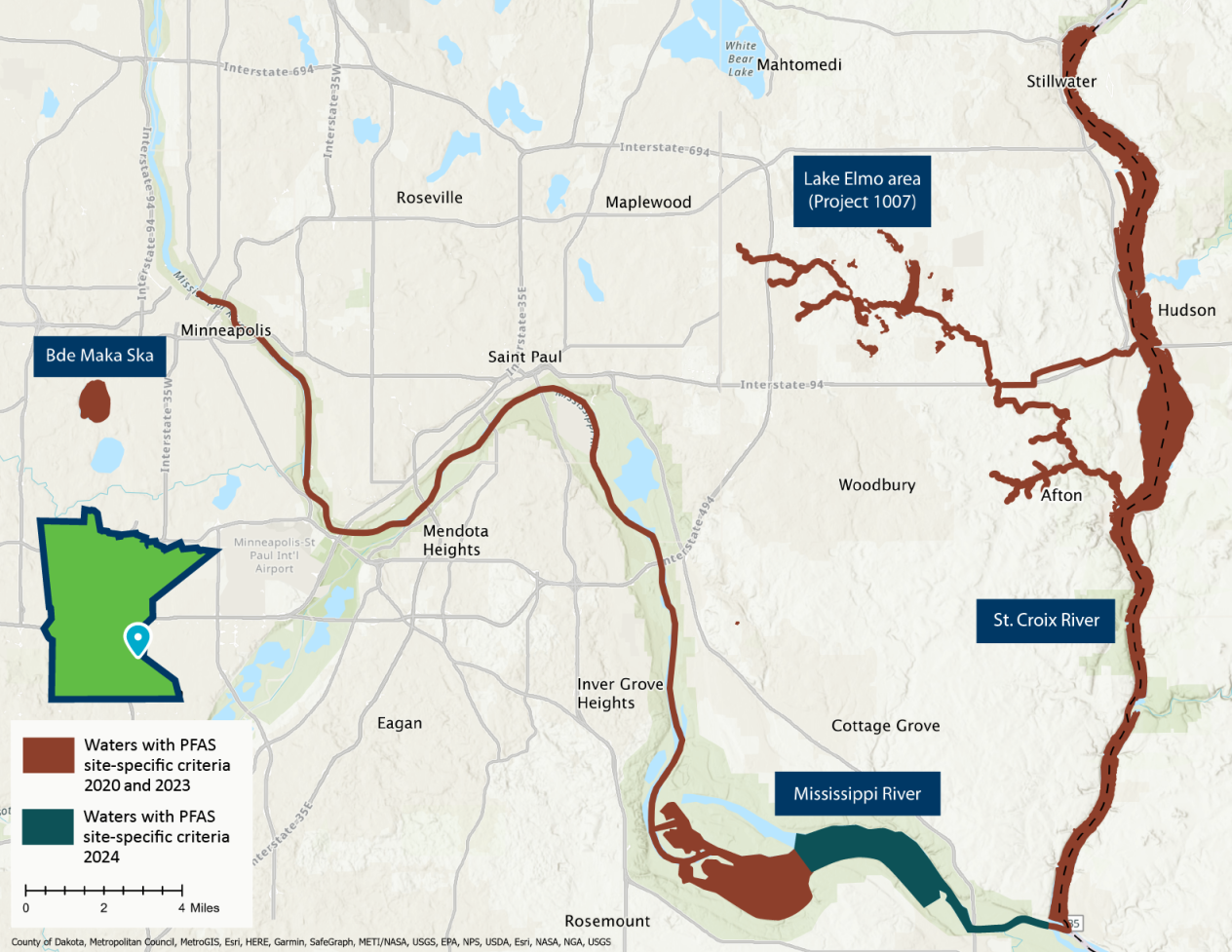To protect human health and the environment, we need to limit the amount of per- and polyfluoroalkyl substances (PFAS) in our waters to safe levels. Safe levels means water can be used for drinking, fish are edible, swimming and boating are safe, and aquatic life is supported.
Minnesota has been monitoring for PFAS in fish since the early 2000s. Based on current understanding, PFOS (perfluorooctane sulfonate) is the main PFAS of concern present in fish tissue. Levels of PFOS in fish tissue build up through the food chain from the fish’s intake of water and of organisms that have PFOS in them (like bugs). Concentrations of PFOS can be more than 7,000 times higher in fish tissue than the surrounding water.
Setting goals
The MPCA and the Minnesota Department of Health are setting goals for some PFAS levels. The MPCA published new PFOS protective values for fish consumption (called “site-specific water quality criteria”) related to fish tissue and surface water value in 2020.
Additional PFAS water quality criteria, including for PFOA, were published in January 2023 and May 2024 for specific bodies of water; details are found on the site-specific water quality criteria webpage.
These are not statewide standards. These are targeted site-specific water quality criteria for Lake Elmo (new values) and connected bodies of water, Bde Maka Ska, and the Mississippi River from Ford Dam to River Mile 820.
Next steps
Minnesota's PFAS Blueprint is our interagency strategy for dealing with PFAS. The sustainable, long-term solution is to remove PFAS use in products and industrial processes before it gets into our water. MPCA anticipates future actions using the site-specific water quality criteria framework and may turn to rulemaking for aquatic consumption or to protect the aquatic community itself.
The MPCA is also working with permitted dischargers, such as wastewater treatment plants, to reduce levels of any PFAS in their discharge water. Many facilities are conduits of PFAS to the environment rather than sources that generate it. PFAS treatment is expensive and we know creative solutions and tools like variances may be needed.
More information
Surface waters with PFAS site-specific criteria
